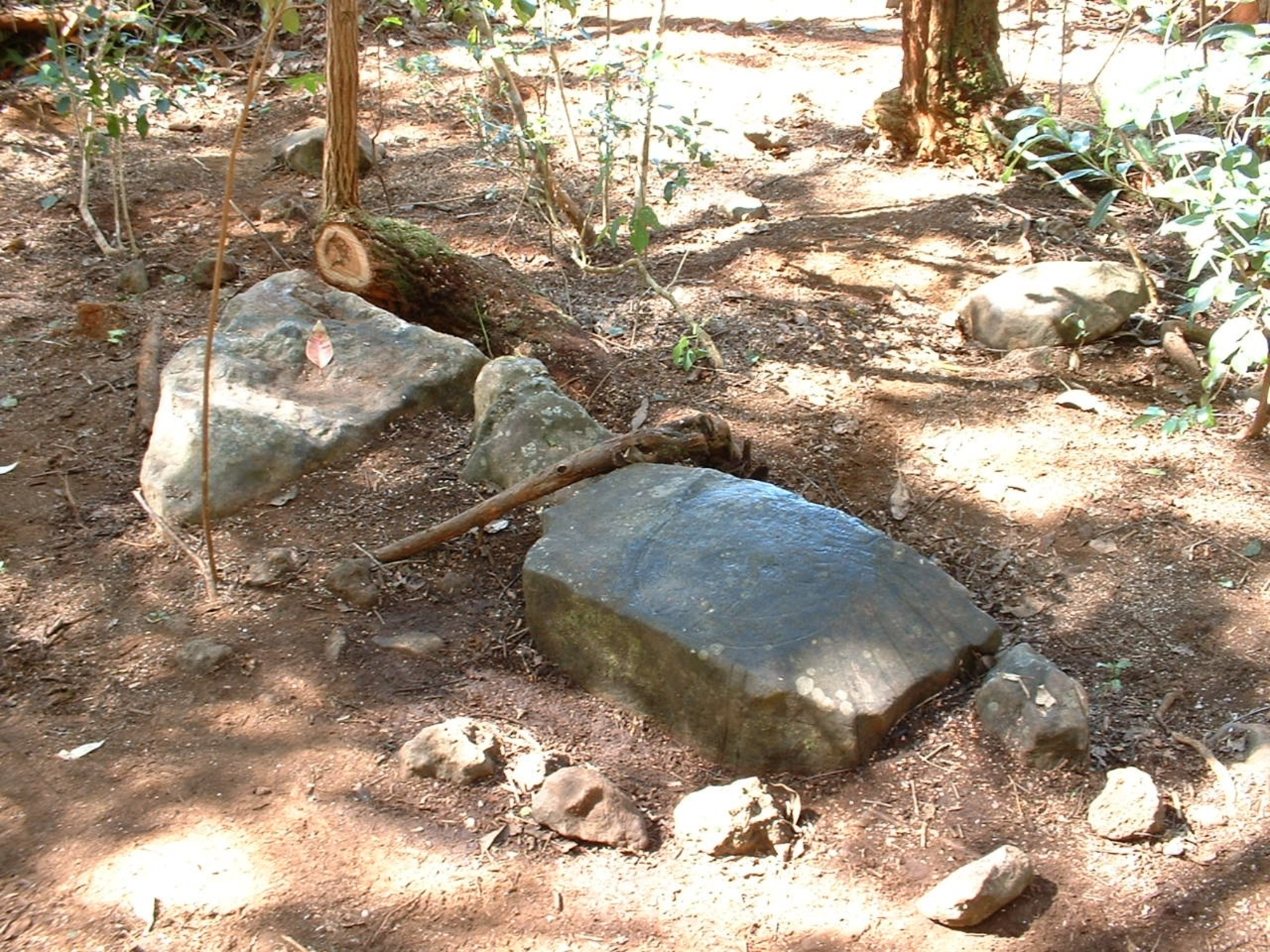
- Home
- Archaeology on Reunion Island
- Sites
- Cilaos
- Îlet à Cordes and Forêt du Tapcal
Remains of archaeological interest were identified in the Îlet à Cordes and Tapcal areas in the 1980s. The discoveries sparked media interest when gendarmes and Réunion-based organisations took it in turns to make expeditions to the site.
Human remains
"Shelter I", below the departmental road leading to Îlet, was "excavated" in April 1983 by gendarmes after a local resident alerted them to the existence of bones and stones piled in a semicircle. An advisor at the former Excavations and Antiquities Office (BFA), S. Greffet-Kendig, then submitted two reports, and performed an osteological analysis of the site and confirmed the existence of bones belonging to two black adult males with highly developed muscular systems. The hypothesis of a marron grave site was floated but could not be confirmed because of a shortage of available data and the absence of an archaeological context due to the circumstances in which the remains were exhumed.
Gendarmes also investigated "Shelter II", in the forest of Tapcal, where they exhumed two skeletons that appeared to belong to a man and a woman.
The engraved stone of Tapcal
Engravings were found on a block measuring 85 × 42 cm during an expedition mounted in April 1999 by NDP. An observer mission in 2004 recorded terraces and low dry-stone walls along with plants of anthropic origin close to the engraved block; these remains suggest the site may have been occupied by Petits-Blancs in the late 19th century. Despite additional surveys carried out in 2008, the purpose of the engraved stone remains unknown. It may have been connected to the agricultural activities of the Petits-Blancs or even an earlier occupation.






